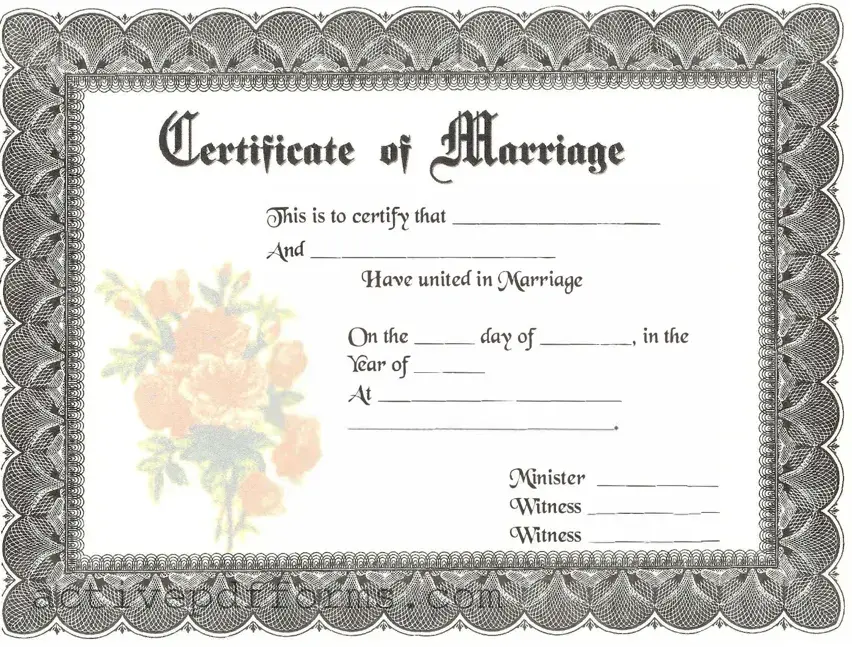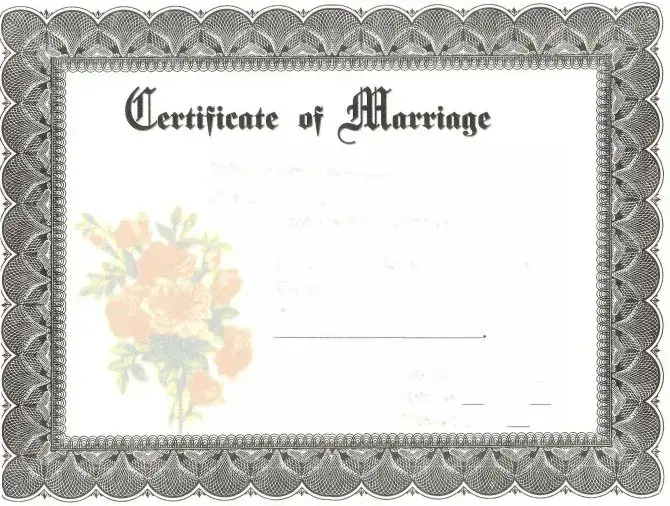In the pivotal moments that shape our lives, few documents hold as much significance as the Marriage Certificate. This form, emblematic of the legal union between two individuals, transcends mere paperwork to embody the love, commitment, and partnership that define marriage. It serves a dual purpose: on one hand, acting as an official record that validates the matrimonial bond under the law, and on the other, serving as a cherished personal memento that couples treasure for years. The form’s contents, typically including the names of the parties, the date of marriage, and the place where the ceremony took place, are straightforward yet profound. Beyond its basic elements, the certificate plays a critical role in legal contexts, from tax filings and insurance to name changes and inheritance issues. Hence, understanding the nuances of the Marriage Certificate form is not just about recognizing its value as a symbolic artifact of one’s love story but also about navigating the various legal landscapes it influences. As individuals step into this significant chapter of their lives, grasping the intricacies and implications of this document becomes indispensable.

